31 years ago today, engineers at the Sema Group used the Vodaphone network and a computer to send the world’s first SMS. It revolutionized mobile communications, allowing for not only short exchanges between friends, family, and coworkers, but for security checks, donation drives, and marketing programs all to take place with minimal effort from employees or volunteers. READ a bit about how SMS came to be… (1992)

Friedhelm Hillebrand conceptualized SMS in 1984 while working for Deutsche Telekom. Sitting at a typewriter at home, Hillebrand typed out random sentences and counted every letter, number, punctuation mark, and space. Almost every time, the messages contained fewer than 160 characters, thus giving the basis for the limit one could type via text messaging.
Together with colleagues, Hillebrand formed the GSM, or (Group Special Mobile) to expand on the technology, and both the ISDN and GSM networks grew out of their work. The first SMS message was sent over the Vodafone GSM network, from Neil Papworth of Sema Group (now Mavenir Systems) using a personal computer to Richard Jarvis of Vodafone using an Orbitel 901 handset. The text of the message was “Merry Christmas.”
MORE Good News on this Date:
- The Lewis and Clark Expedition marked their location on a pine tree during explorations from the Missouri River by land to the Columbia River (1805)
- Surgeons in Cape Town, South Africa performed the first human heart transplant and the patient lived 18 days with the new heart (1967)
- US hostage Alann Steen was released from Lebanese captivity after 4.8 years (1991)
- Representatives from 121 countries signed The Ottawa Treaty prohibiting the manufacture and the deployment of anti-personnel landmines (1997)
- Happy 62nd Birthday to Julianne Moore, the actress and author from both indie and blockbuster films, who’s earned an Academy Award, two Emmys, and two Golden Globes (1960)
9 years ago today, the Japanese national aerospace agency (JAXA) launched the lander Hayabusa2 to find the asteroid 162173 Ryugu, deploy two small rovers onto it, take samples, and bring them back to Japan. Those samples arrived back recently, and are currently unveiling their mineral secrets. The particulars of the mission boggle the mind, but Hayabusa isn’t finished. It will use its sophisticated ion thrusters and other scientific instruments to go explore another asteroid or scientific interest.
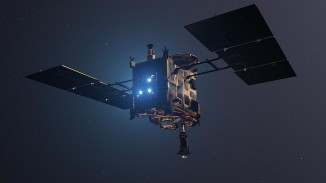
On the 16th of July, Hayabusa2 was commanded to close with Ryugu to a distance of just 55 meters before ejecting the first two of its four rovers, Rover-1A (HIBOU) and Rover-1B (OWL) which dropped independently to the surface of the asteroid. These rovers then ejected their sample capsules into the same orbit as Hayabusa2, which the craft picked up and later deposited in Australia.
Hayabusa2 also descended close enough to Ryugu to place a “sampling horn” which is like a combination of a gun and a vacuum cleaner. It blasted a hole into the asteroid before vacuuming up all the dislodged material. In total, the three sampling methods took 5.4 grams of material. (2014)
47 years ago today, a giant inflatable pig could be seen floating above London after breaking free from its Pink Floyd album photo shoot. The 40-ft-long pig, nicknamed Algie, would become famous on the album cover of the band’s forthcoming album, Animals.
Britain’s Civil Aviation Authority issued a warning to all pilots that a flying pig was on the run. It eventually crashed into a barn in Godmersham, Kent, where the farmer reported a complaint about his cows being scared by the balloon intruder.
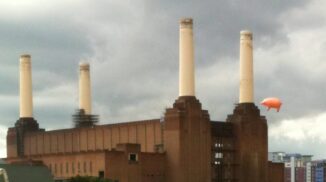
Animals became a Top 10 LP, and the floating pig was flown in stadium concerts across the world. The background architecture in the cover photo, the Battersea Power Station, has since attracted multitudes of visitors to the now-closed facility. WHY this building? (1976)
Roger Waters had “always loved the Battersea Station” and resonated with its ‘four legs’. “It was like a table… there were four bits to it, representing the four members of the band.” And, of course, it was a power station, which he believed also represented the music of the band.
And, 190 years ago today, Oberlin College was founded by two Presbyterian ministers on 500 donated acres in Oberlin, Ohio.
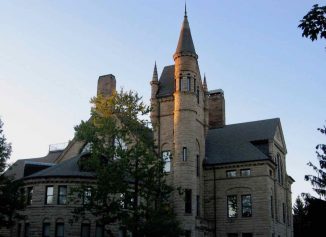
It was the first coeducational liberal arts college in the United States and the second oldest continuously operating coeducational institute of higher learning in the world. Oberlin also became one of the first American colleges to admit African-Americans. Notable alumni include several Nobel laureates, Thornton Wilder and a dozen other Pulitzer Prize winners, 12 MacArthur Fellows, actors Ed Helms and. Lena Dunham, and RadioLab and TV broadcaster Robert Krulwich. (1833)
Also, 34 years ago today, the Malta Summit produced a declaration by U.S. President George H. W. Bush and Soviet Union leader Mikhail Gorbachev saying the Cold War between the two nations that had lasted four decades was over.
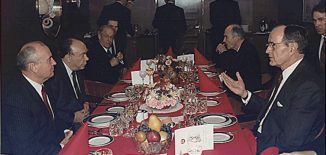
News reports of the time referred to the meeting as the most important since 1945, when British Prime Minister Winston Churchill, Soviet Premier Joseph Stalin, and US President Franklin D. Roosevelt agreed on a post-war plan for Europe at the Yalta Conference. It was major turning point in East-West relations, and Bush summed it up saying, “We can realize a lasting peace and transform the East-West relationship to one of enduring cooperation. That is the future that Chairman Gorbachev and I began right here in Malta.” (1989)
And, 93 years ago today, Jean-Luc Godard, the pioneering film director and screenwriter who rose to prominence as the most influential French filmmaker and catalyst for the New Wave movement in the 1960s, was born.
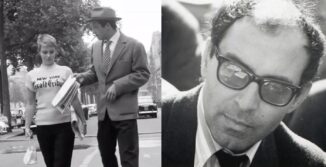
He won global notoriety for his first feature in 1960 Breathless (pictured below)—and continued his experimentation with jump cuts, narrative, music, casual camerawork, and popping color that inspired directors like Scorsese, Tarantino, De Palma, Soderbergh, Altman, and Bernardo Bertolucci.
His collaborations with actresses Brigitte Bardot, in Contempt (Le Mépris), and with Anna Karina, his first wife—which included the critically acclaimed films Vivre sa vie, Bande à part, and Pierrot le Fou—were called “arguably the most influential body of work in the history of cinema.”
Godard’s 2018 film, Le livre d’image (The Image Book), was filmed “in various Arab countries, including Tunisia” to portray the modern Arab World… (1930)
And, 58 years ago today, the sixth album by The Beatles was released—Rubber Soul. With the 14 new songs, the British band expanded their sound using a wide range of instruments. Influences included African-American soul music and the new folk-rock of Bob Dylan. George Harrison’s use of a sitar on “Norwegian Wood” sparked a craze for the Indian instrument that lasted beyond the 60s.
The album greatly influenced Brian Wilson of The Beach Boys who believed it marked the first time in pop music that focus had shifted from just making hit singles to making an actual album. Rubber Soul, which includes Drive My Car, Nowhere Man, and Michelle, with its French lyrics and instrumentation, earned the #5 spot on Rolling Stone magazine’s list of the “Greatest Albums of All Time”. WATCH The Making of Rubber Soul, and buy books or music about it here. (1965)
SHARE the Memories, Milestones, Movies, and Music…






















[…] Brought to you by:- https://www.goodnewsnetwork.org/events131202/ […]